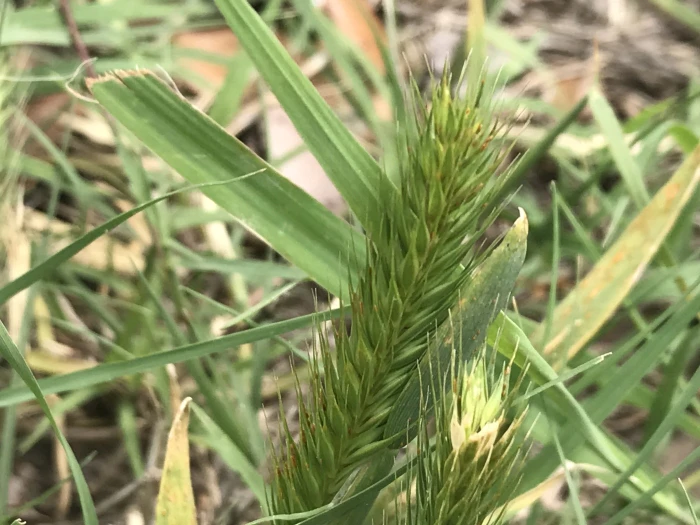Little Barley
(Hordeum pusillum)
Little Barley (Hordeum pusillum)
/
/

© Zinogre
CC BY-SA 4.0
Image By:
© Zinogre
Recorded By:
Copyright:
CC BY-SA 4.0
Copyright Notice:
Photo by: © Zinogre | License Type: CC BY-SA 4.0 | License URL: http://creativecommons.org/licenses/by-sa/4.0/ | Uploader: zinogre | Publisher: iNaturalist |













Estimated Native Range
Climate Requirements for Dover, New Hampshire
| This Plant | Your Site | Plant Suitability for Your Location | ||
|---|---|---|---|---|
| • Precipitation | 4" - 83" | 43" | Aquatic | Aquatic |
| • High Temp. | 64°F - 108°F | 83°F | Your summer temperatures are normal for this plant. | Excellent |
| • Low Temp. | -2°F - 57°F | 13°F | Your winter temperatures are normal for this plant | Excellent |
This plant may not grow well at your location - your precipitation is too high.
Summary
Hordeum pusillum, commonly known as little barley, is an annual grass that is native to a variety of habitats including prairies, open woodlands, and disturbed sites across most of the United States and northern Mexico. It typically grows to a height of 6-16 inches and features flat, pubescent (hairy) leaves. The inflorescence is a spike that can be green or purplish, and the plant is known to flower from April to June. Little barley is adapted to a range of light conditions but prefers full sun. It is drought-tolerant and often found in dry, gravelly soils, making it well-suited to xeriscaping.
Little barley’s historical use by Native Americans as a food source is notable, with its grains being ground into flour or used to make mush or pinole. Today, it is not widely cultivated for food but may be of interest to those looking to grow native grasses or for educational purposes regarding indigenous agriculture. In cultivation, it requires minimal care, thriving in poor soils with little water once established. However, it can become weedy and suppress the growth of other grasses, making it potentially problematic in mixed grass settings. Control is typically achieved with herbicides, but careful management can prevent its spread.CC BY-SA 4.0
Little barley’s historical use by Native Americans as a food source is notable, with its grains being ground into flour or used to make mush or pinole. Today, it is not widely cultivated for food but may be of interest to those looking to grow native grasses or for educational purposes regarding indigenous agriculture. In cultivation, it requires minimal care, thriving in poor soils with little water once established. However, it can become weedy and suppress the growth of other grasses, making it potentially problematic in mixed grass settings. Control is typically achieved with herbicides, but careful management can prevent its spread.CC BY-SA 4.0
Plant Description
- Plant Type: Grass
- Height: 0.5-1 feet
- Width: 0.5-1 feet
- Growth Rate: Rapid
- Flower Color: N/A
- Flowering Season: Spring, Summer
- Leaf Retention:
Growth Requirements
- Sun: Full Sun, Part Shade
- Water: Medium
- Drainage: Medium, Slow
Common Uses
Erosion Control, Low Maintenance
Natural Habitat
Native to prairies, open woodlands, and disturbed sites across most of the United States and southwestern Canada
Other Names
Common Names: Little Wildbarley
Scientific Names: Hordeum pusillum , Critesion pusillum , Hordeum intercedens , Hordeum pusillum subsp. pusillum , Hordeum pusillum var. pubens , Hordeum pusillum var. pusillum , Hordeum pusillum var. typicum , Hordeum riehlii
GBIF Accepted Name: Hordeum pusillum